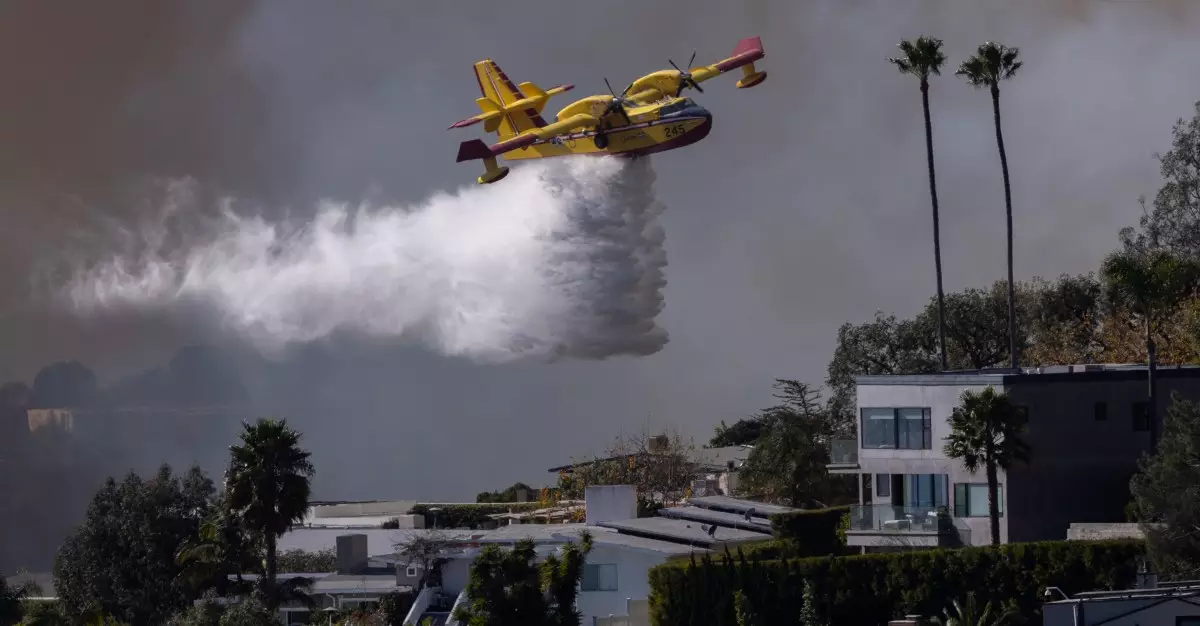The case of former video game executive Peter Akemann serves as a cautionary tale about the intersection of technology and responsibility. On January 9, 2025, Akemann flew his DJI Mini 3 Pro drone in a manner that not only violated federal regulations but also endangered both aerial firefighting efforts and himself. This incident raises critical concerns about the consequences of irresponsible drone use in sensitive environments, particularly amid emergencies such as wildfires.
Akemann’s drone flight was anything but ordinary; he piloted it over 2500 meters from his launch point, losing visual contact while flying. The drone ultimately collided with a Super Scooper water dumping aircraft engaged in firefighting activities during the Los Angeles Palisades wildfires. The resulting damage—a 3-inch by 6-inch hole in the wing of the firefighting plane—instigated a legal and financial fallout that could have been avoided. The incident left authorities with no choice but to investigate the responsibility behind this dangerous act.
Following the incident, Akemann agreed to plead guilty, which may spare him from serving time in jail. Instead, he faces a penalty that includes approximately $65,000 for aircraft repairs and 150 hours of community service. The leniency of this deal might appear surprising considering the gravity of the situation, especially since his actions directly obstructed firefighting efforts at a time when every second counted. This raises an important question: Should penalties for such reckless behavior be more severe, particularly given the potential risk to lives and property?
Peter Akemann is not a novice in the world of technology; he held prestigious titles, including that of president and chief technologist at Skydance Interactive. His background in the gaming industry did not, however, shield him from legal liability. The brief disappearance of his online presence suggests an immediate fallout from the incident. Could this loss of digital identity indicate how deeply this event has affected his reputation and future opportunities?
One of the interesting aspects of Akemann’s defense tactics revolves around the malfunction of the DJI drone’s geo-fencing feature. Geofencing is a technological safeguard designed to prevent drones from entering restricted airspace, yet DJI’s system has come under scrutiny for recent changes that have removed some of its most stringent restrictions. This raises a fundamental question: How much responsibility should drone manufacturers bear for misuse of their products? While the operators must adhere to laws, manufacturers should ensure their technologies are robust enough to prevent such dangerous situations effectively.
Through this incident, we see a broader issue regarding the accountability of drone operators in public spaces. The FAA has established guidelines to ensure airspace safety, especially in emergencies like wildfires. Nevertheless, operators must comply with these regulations. Akemann’s attorneys have acknowledged their client’s “grave error in judgment,” but is it sufficient just to express regret when actions have led to significant consequences? The community service requirement may serve as a reminder of this, but should we not desire more concrete repercussions to deter such behavior in the future?
The chaotic day that Peter Akemann brought upon himself, the aircraft crew, and the firefighting efforts highlights the urgent need for tighter regulations and technological safeguards in the drone industry. Devices capable of such aerial maneuvers must come with strict accountability mechanisms for those who launch them. This incident serves as a wake-up call, advocating for a more responsible and informed public in the rapidly evolving landscape of drone technology. If not, future missteps like this could have even graver ramifications than those faced by Akemann. We must collectively embrace accountability to ensure that technology serves the public good rather than poses a risk to it.

